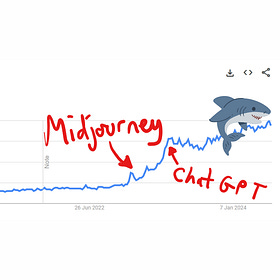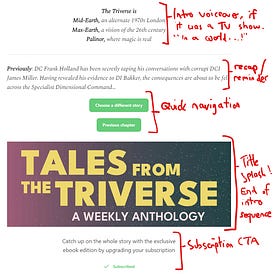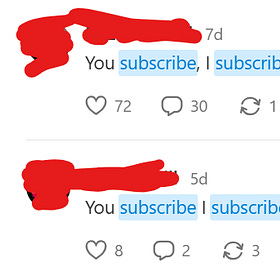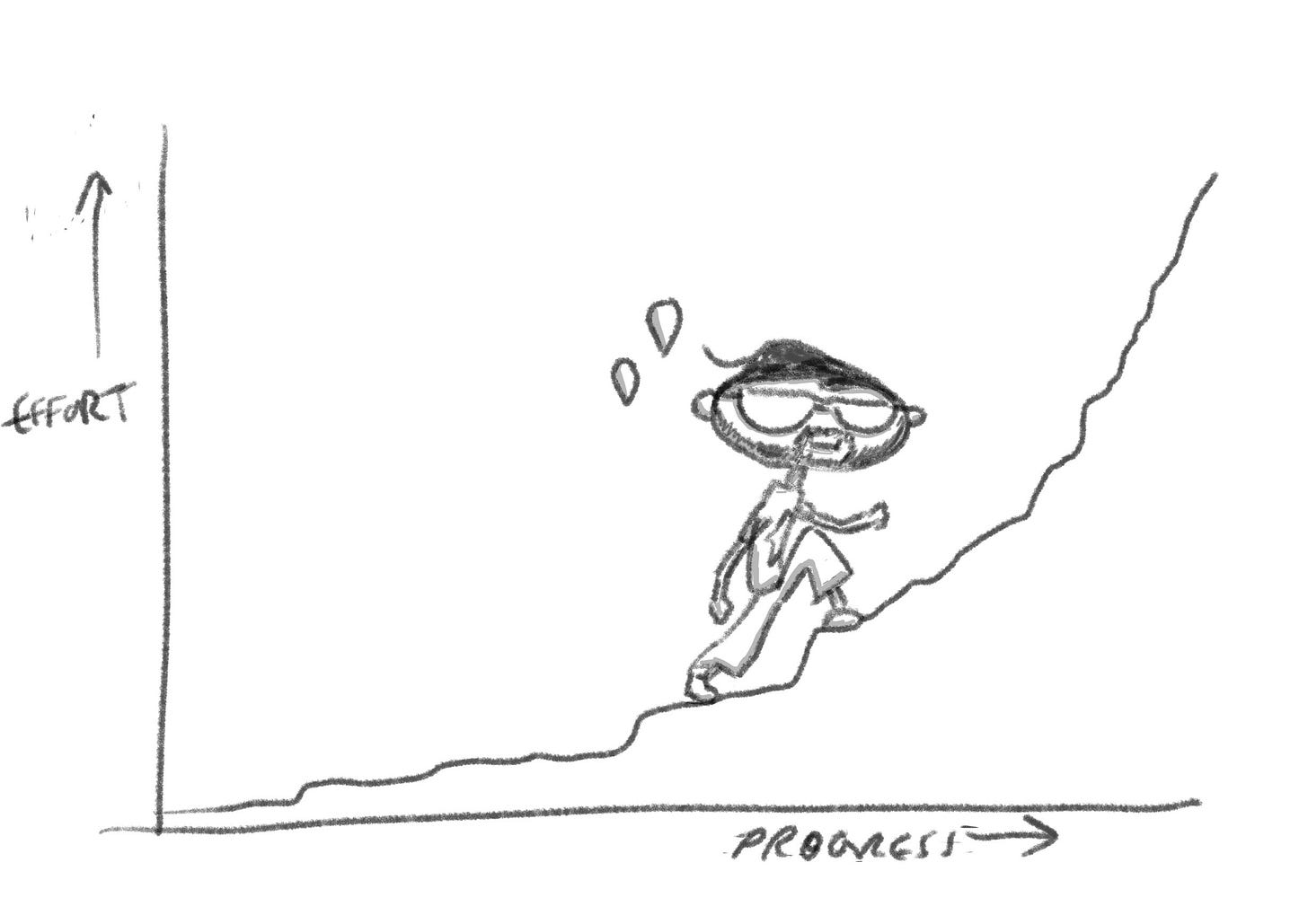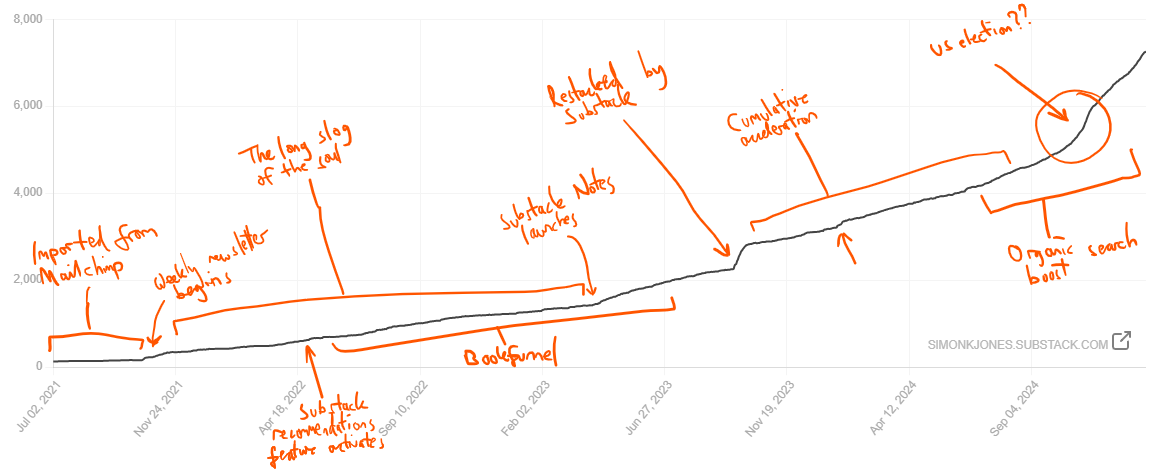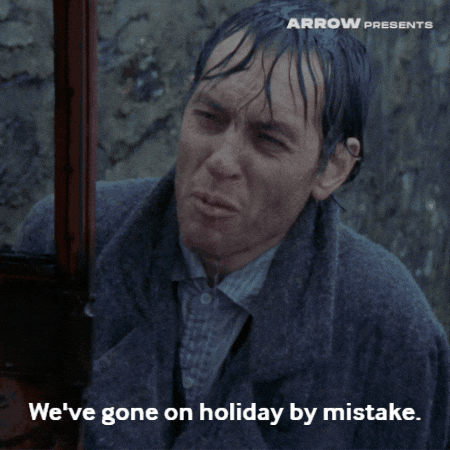2024 report and top articles
Serial fiction, AI, creative independence, online etiquette, fear, Scrivener
It’s traditional to put these sort of lists out at the end of the year, or the very turn of the year, yet here we are halfway through January. Time is still romping along in 2025, I see.
Lots of lovely new readers showed up in 2024, especially in the second half of the year. That means a lot of posts from earlier in the year will have flown under the radar. Today, then, I’m taking a look at the most popular articles from 2024.
I’ll put some other thoughts on Write More and how the newsletter is going at the bottom, but first let’s delve into the archive…
My most popular writing from 2024
The number one slot went to a piece about AI. Yawn, right? Well, this was my attempt to vocalise my frustration and concerns about AI, but to also put an eye to the future and where I think this all might end up.
It’s an angrier piece than my usual, but I think remains laced with a cautious optimism. I suspect this will remain at the top of the most-read pile through 2025…
It's not artists who should fear AI
As artists, we’ve been living in a state of perpetual fear and uncertainty since 2022.
Next up we have my two-parter guide to growing a newsletter. Which, again, yawn — there’s so much of this stuff at the moment, especially on Substack, and a lot of it smells like the usual clickbaity guru-woowoo. Transform your life and earn millions in five minutes!
My aim with this one was to point out that, for most people, it’s going to take ages, it’s going to be a lot of hard work, and there aren’t really any shortcuts.
How to (very, very slowly) cultivate a fiction newsletter: part 1
Writing fiction is hard. Finding readers is even harder. Achieving success, regardless of how you personally measure it, is near impossible.
I do enjoy getting into the nitty-gritty of writing serials, and publishing in newsletter form. This in part because I find it useful to prod at my process. It’s when I spot things I’m doing wrong, and fix them.
This post was less about the creative end of writing a serial story, and more about the act of publishing it. How to help readers get onboard, and streamlining the reader experience generally.
How to publish a serial story in a newsletter
I’ve been writing serial fiction for nine years. Prior to discovering the joys of serial storytelling I’d never really found a way to be consistently productive. Serialising my stories has entirely obliterated my writer’s block.
Almost exactly a year ago I published a piece about owning your writing. It’s another ranty piece (sorry), but it does end on a useful and optimistic note. This was a cathartic article, raging against the bad faith design decisions from the major online platforms over the last fifteen years, and hoping for something better from the new generation of platforms.
I’m happy to say that the general ethos I put into this one has been echoed in all sorts of places since then. Hopefully we’re on the right track, as a creative community.
This next one was published in December and quickly struck a chord. There’s been a huge amount of platform migration in 2024, driven by crappy decisions by management at the big three (Twitter/X, Instagram, Facebook) as well as a volatile political environment in the US and Europe.
This piece was all about trying to steer some of the more confused new arrivals in the right direction:
Please don't ask for subs and follows
Today’s post is a bit of a PSA. And perhaps wishful thinking on my part.
Back in March I went to an event with Naomi Alderman. It was very, very good.
It also made me think very hard about what I write, and how to stay on target without being led astray. Here we go:
I’ve published online for over ten years, one way or another. I’ve worked in and around the book industry for a substantial chunk of that and have talked with hundreds of authors. A question that comes up again and again from new writers is whether publishing online harms your chances of being traditionally published.
It’s a nuanced subject, and this was my attempt to set the record straight:
Does publishing online ruin your chances of finding a traditional publisher?
A question that I’ve seen crop up repeatedly over the last ten years is whether putting your work online is a bad idea for your long-term writing career. The worry, quite reasonably, is that once the work has been released there’s no longer a chance to publish it in other forms; especially through a traditional publisher.
In 2024 I was fortunate to do a number of in-person events, talking about my writing. It’s always a rewarding experience, and something I really encourage everyone to seek out. This tied in with comments I was seeing from people who were very worried about sharing any of their work.
This article was my attempt to help others get past that fear, and embrace the idea of having readers:
Overcoming the fear of sharing your writing
Last week I saw a message over on Notes that I won’t quote directly as I don’t want to accidentally cause any distress to the writer, but here’s what it said:
Another practical post, this time from September when I poked at the recommendations system on Substack. I’m very aware that writing on Substack prompts some eye-rolls these days, and that it’s the Cool Thing To Do now (which inevitably means it is also not cool anymore)1, but they have implemented some genuinely game-changing features that have proved very useful.
Recommendations is one of them:
How Substack's recommendations system can be used by fiction writers
Being a writer of fiction is hard. Actually writing the text in the first place is astonishingly difficult, both in terms of finishing it and making it any good. But then comes the fiendishly difficult bit: the part which is akin to the alchemists of old, trying to transform lead into gold.
Finally, we have my introductory video to Scrivener, my preferred writing tool. I’ve used it for all four of my major serials over the last decade and it’s never let me down. In fact, I’d go as far as stating that I wouldn’t be able to write and publish in the way I do without it.
It’s not for everyone, but it’s definitely worth giving it a try, in case it unlocks new possibilities for you, as it did for me:
What is Scrivener?
I’ve used Scrivener for over a decade. Initially I merely dabbled, but when I started writing and publishing serial fiction it became an indispensable part of my process.
That was supposed to turn into a whole series, but time got the better of me. Something I hope to return to in some form in 2025!
Big ol’ charts
As is tradition, I thought it might be useful to look back at the last year in terms of how this newsletter has performed. Not to show off and/or moan, but as an example. If you want to write in a similar area to me, this might be useful data with which to fine tune your plan and expectations.
Free subscriber growth
Here’s my subscriber growth from 2021 through to now:
To get into those key events:
I started off with about 100 mostly irrelevant subscribers that I imported from my ancient and lame Mailchimp newsletter.
I started posting twice weekly around late-summer 2021.
I’ve always had steady growth, but it was slowish for the first year and a half. Most of this was powered by Bookfunnel group promos.
Substack Recommendations launched in April 2022, and I saw a bit of an uptick. This has built over time, as you would expect: as more people have recommended me, I’ve had more subscribers come in this way. It’s 100% a very powerful, long-term cumulative boost.
Substack Notes launched in early 2023 and I saw an immediate uptick in subscribers. These were relevant subscribers, too, as far as I could tell.
Around October a Note of mine was restacked by the official Substack account, which caused an unprecedent jump in subscribers. I imagine many of these people unsubscribed once they started paying attention, and you can see an immediate flattening just after, but I never saw a significant actual drop in real terms. The restack was to my ‘What actually is Substack?’ video, which unexpectedly seemed to fill a real need for back-to-basics education on the platform. I’d like to say this was a strategic move on my part, but it really wasn’t.
From this point there was a general acceleration. I suspect this was the recommendations system compounding, plus by this point I had a sizeable back catalogue, and people were starting to reference me whenever serial fiction was mentioned.
From mid-2024 there was another acceleration period, which just kept getting steeper and steeper on the chart. It went nuts around October-November, before relaxing a bit. I can only assume this was related to the US election, and the mass migration of users between platforms. Anyone showing up who wanted some Substack basics, or to write fiction on Substack, seemed to be finding their way to this newsletter. This was interesting to me: an event caused by outside political forces, but not because I had actually written about politics. It was a sort of secondary and tertiary effect.
The main observation is that it’s a long game, but the Curve Does Go Up, as long as you have the patience.
To shine a light on this in a different direction, here’s how long it has taken me to hit key milestones:
0-1,000 subscribers: 14 months
1,000-2,000 subscribers: 9 months
2,000-3,000 subscribers: 4 months
3,000-4,000 subscribers: 7 months
4,000-5,000 subscribers: 4 months
5,000-6,000 subscribers: 1 month
6,000-7,000 subscribers: 2 months
Growing by a thousand subscribers in a couple of months still seems ridiculous. I wouldn’t be surprised if a chunk of those turn out to be bots, or simply very confused people.
The main thing is to say a big thank you to all of you who are a) real people and b) are here on purpose. Writing this newsletter is immense fun, and getting to meet all of you in the comments and the wider writing community is such a pleasure.
2025 is going to be a fun year. Tales from the Triverse will, at last, be completed, I’ve got some early plans for more intensive workshops/toolkits/courses and I really want to do more collaborations with other creators. More on all of that as and when it comes into focus.
Paid subscriber growth
So, what about paid subscribers? This isn’t something I’ve talked about previous years, mainly because for the first couple of years I didn’t really have any paid subscribers! That’s a big part of why I don’t talk about that side of things in terms of advice, because I’m far from an authority on it.2
There are some useful observations to be taken from my experience now, though. The awkward British person in my still finds talking about money a bit garish, so I’m going to hide it behind a paywall so that nobody sees:3
Keep reading with a 7-day free trial
Subscribe to Write More with Simon K Jones to keep reading this post and get 7 days of free access to the full post archives.



